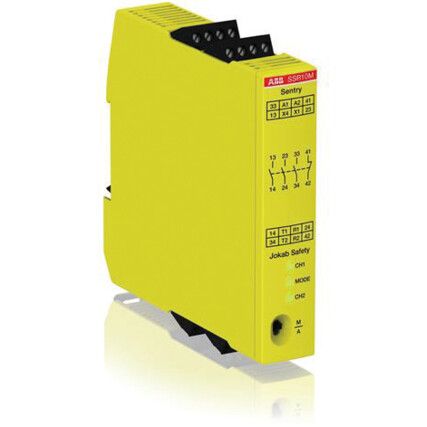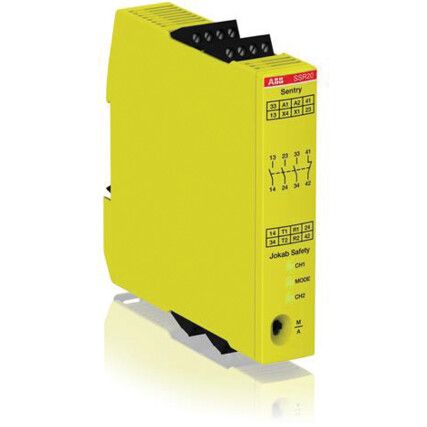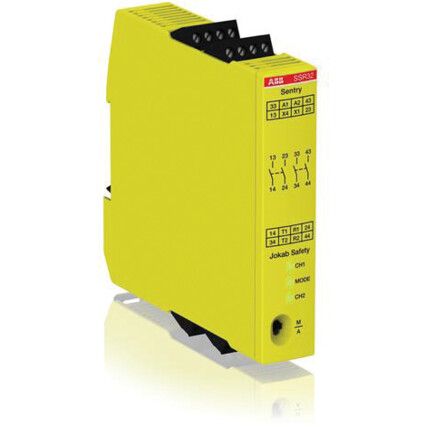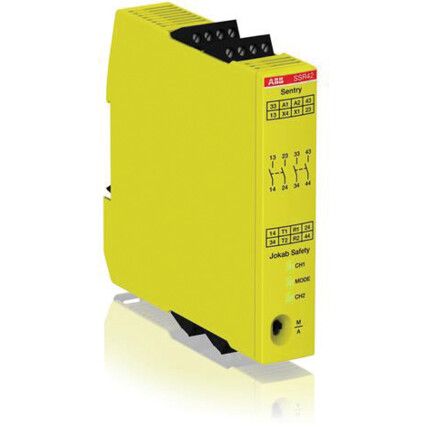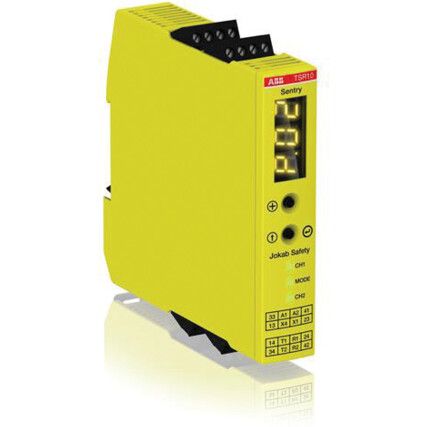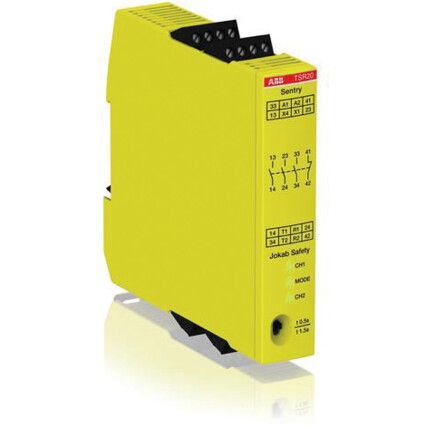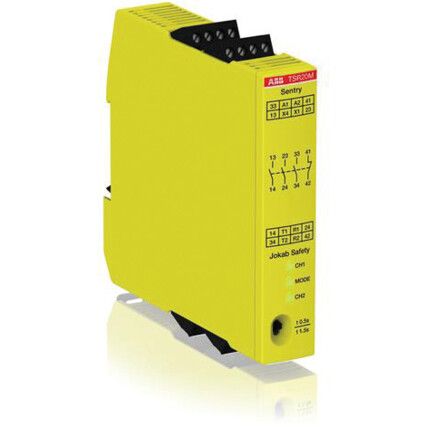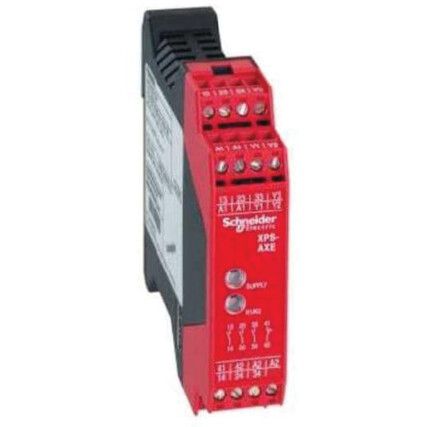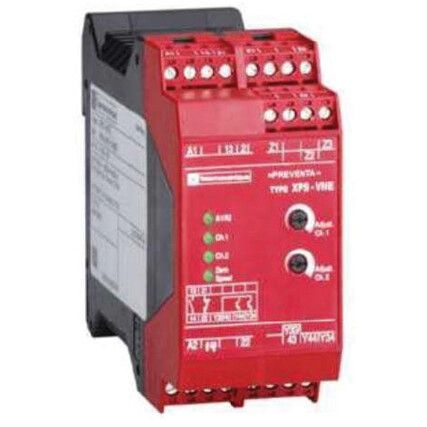Safety Relays
Suited for use in any workplace where automation within machinery is key, safety relays are designed to help keep workers safe and machinery working to an optimum level by alerting you as to when there is a circuit problem within your machinery. Here at Cromwell, we have a wide range of safety relays from leading brands such as ABB and Schneider Electric.
Why safety relays?
Safety relays are an electrical device that are generally used in automation processes. They are designed to implement various safety functions depending on how they are wired. They function by monitoring the function, inputs and outputs of other safety devices such as switches, triggering a safety response when a fault occurs to minimise danger due to circuit malfunction or failure. This response can be in the form of a shut off command or simply alerting the correct switchboard to isolate the problem. They can in some cases be used in conjunction with other safety relays or safety devices to control and monitor entire large machinery or even in some cases, entire plants or warehouses. Safety relays are integral where large machinery or multiple machines are in use as they offer an instantaneous shut down of any faulty or malfunctioning machinery, keeping workers safe and preventing further damage to the faulty machine until the problem is isolated and rectified.
Safety relay types
There are 2 main types of safety relay; a single function or a multi-function safety relay. Both types of safety relay are designed to improve the safety of an automation circuit, the main difference being the number of functions they can perform at any one time. The two types are outlined below for your convenience when browsing our range of safety relays.
• Single function - As it sounds, single function safety relays are designed to monitor and perform one specific function in response to the safety function being triggered. They do not have the capability of monitoring more than one task.
• Multi-function - Unlike single function safety relays, multi-function safety relays are able to monitor and then perform multiple tasks from one singular relay. This saves space instead of having multiple singular function safety relays and keeps wiring and control panels tidy.
FAQs
What is the difference between a safety relay and a normal relay?
Whereas normal relays have the ability to open and close a switch the same as a safety relay, normal relays do not have the capacity to monitor circuits and doesn't account for short circuit faults where the circuit may be welded shut if enough heat is produced from the fault. They can be wired redundantly to be opened in the case of a fault. Safety relays however can be used to detect short circuit faults, ground faults, wire breakage faults or cross connection errors to offer a superior level of protection in the event of a fault. Safety relays are also specifically designed to meet safety requirements and are tested rigorously for this function.
Are safety relays required?
Safety relays aren't a mandatory part of an automation circuit, however they are recommended to bolster the safety of your personnel working on large, automated machinery as well as keeping your machinery operating properly. Some common applications for safety relays are in emergency stop buttons, light curtains, three position devices, magnetic switches, safety mats and safety switches.
